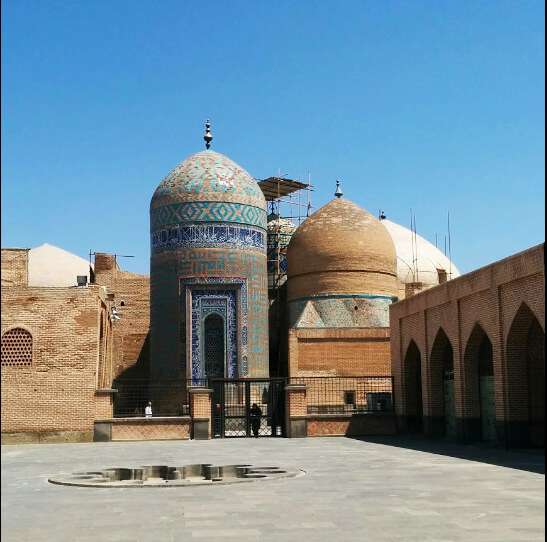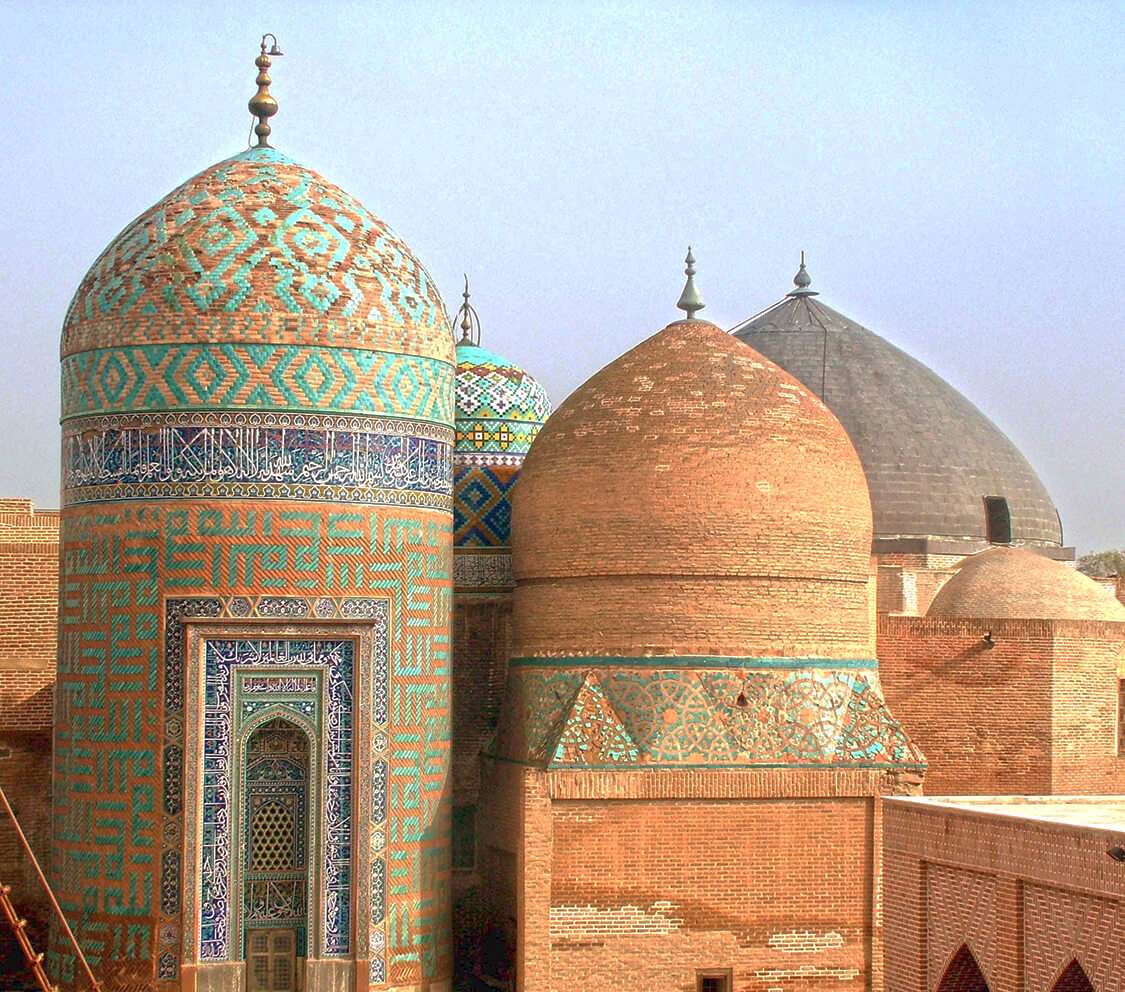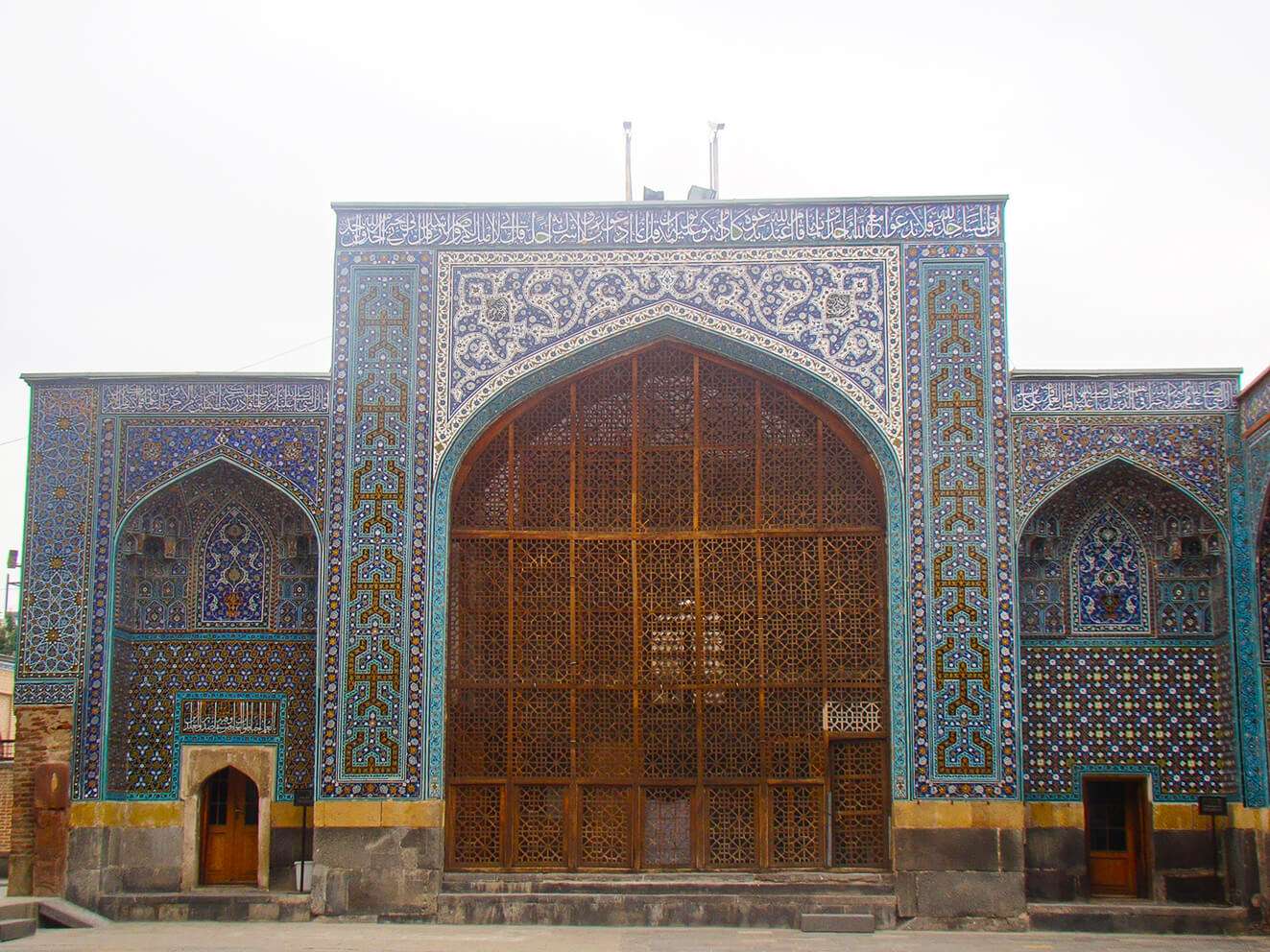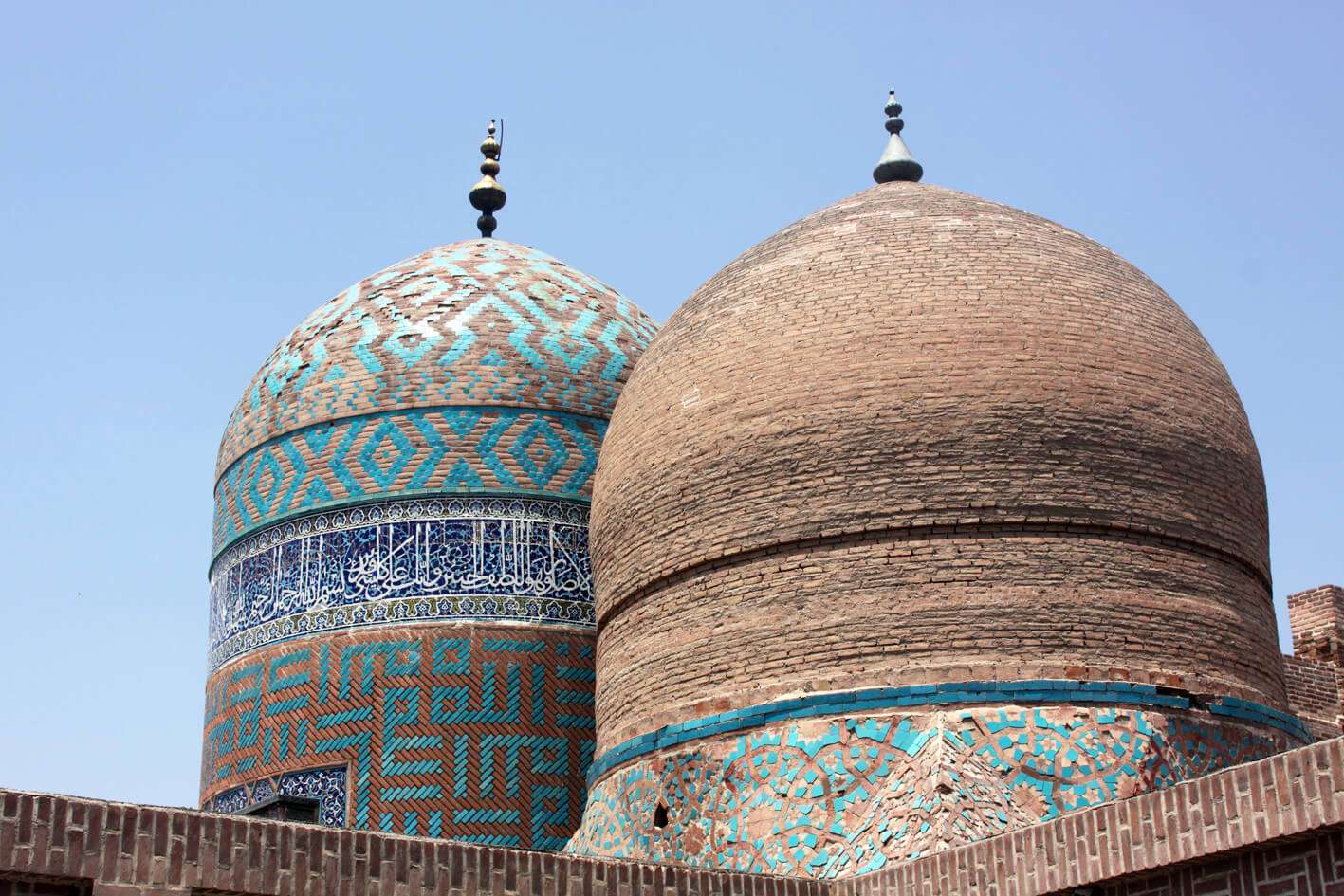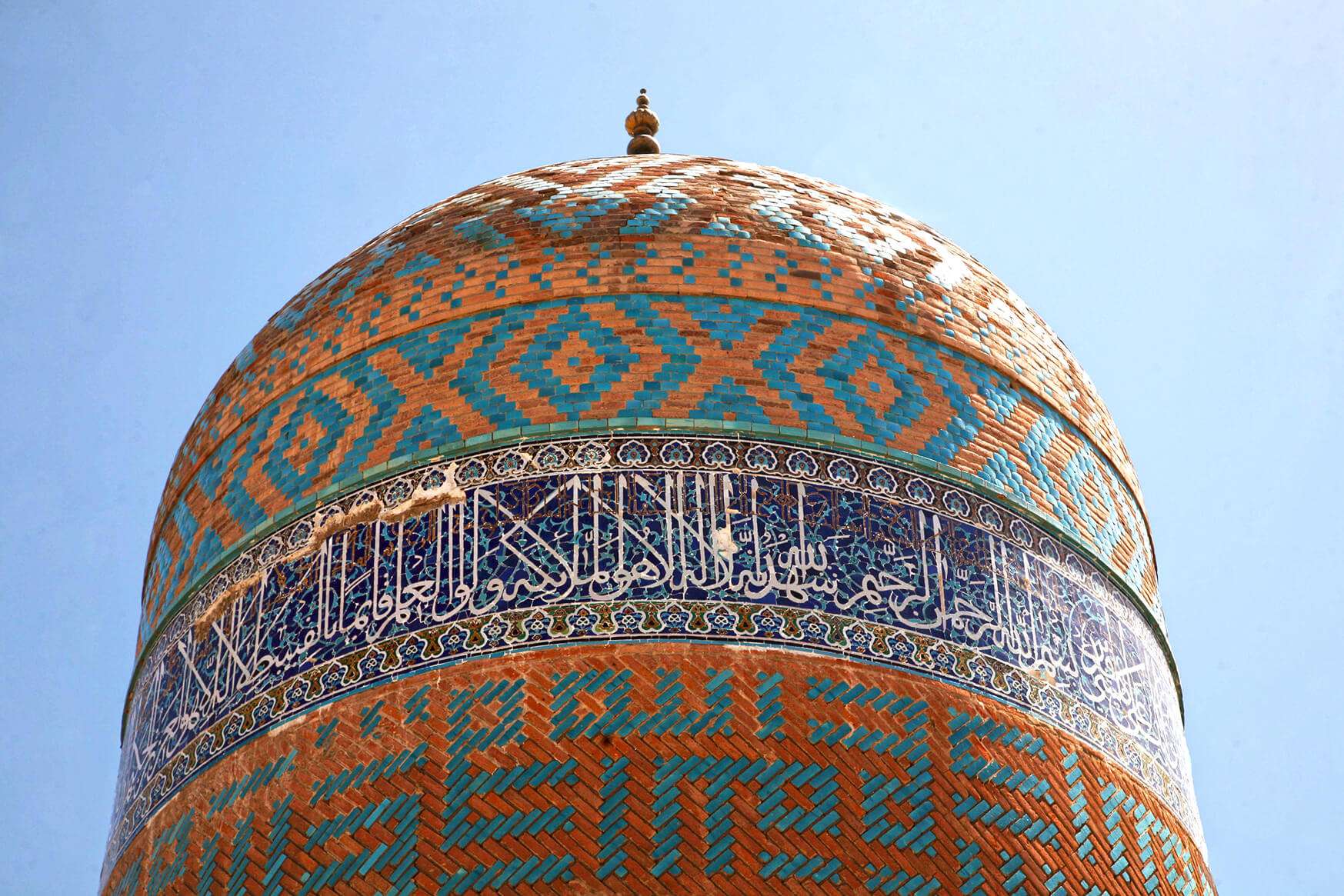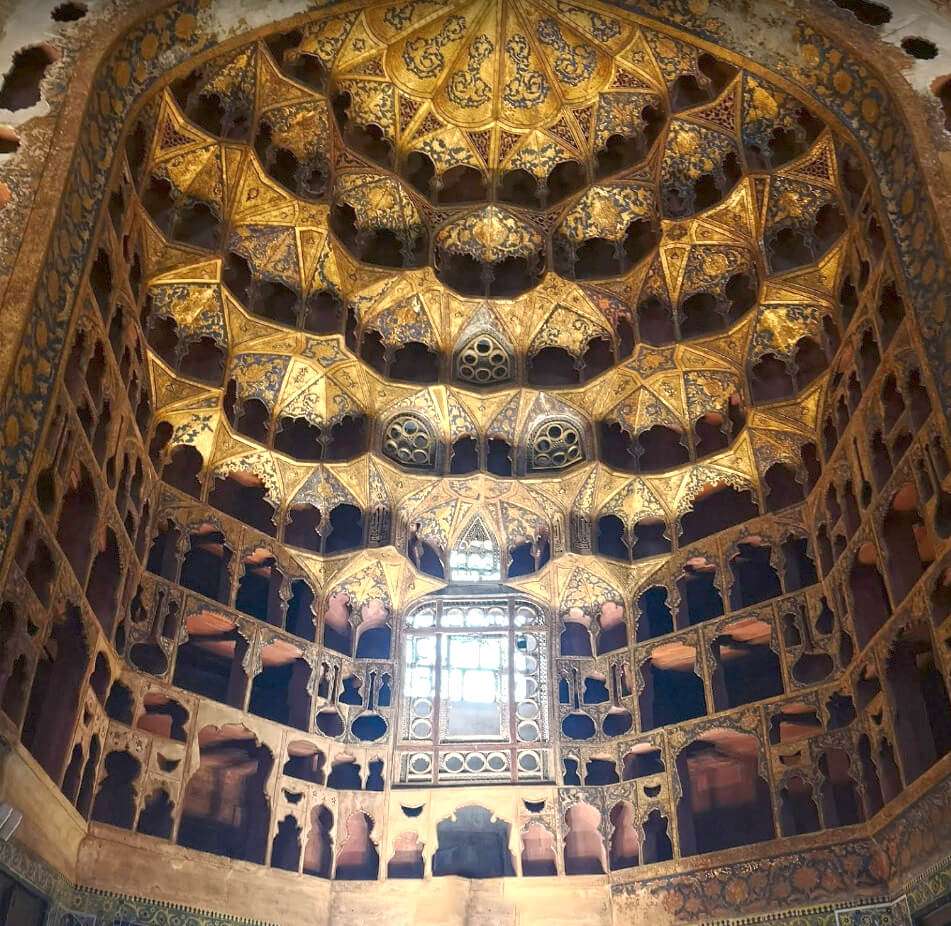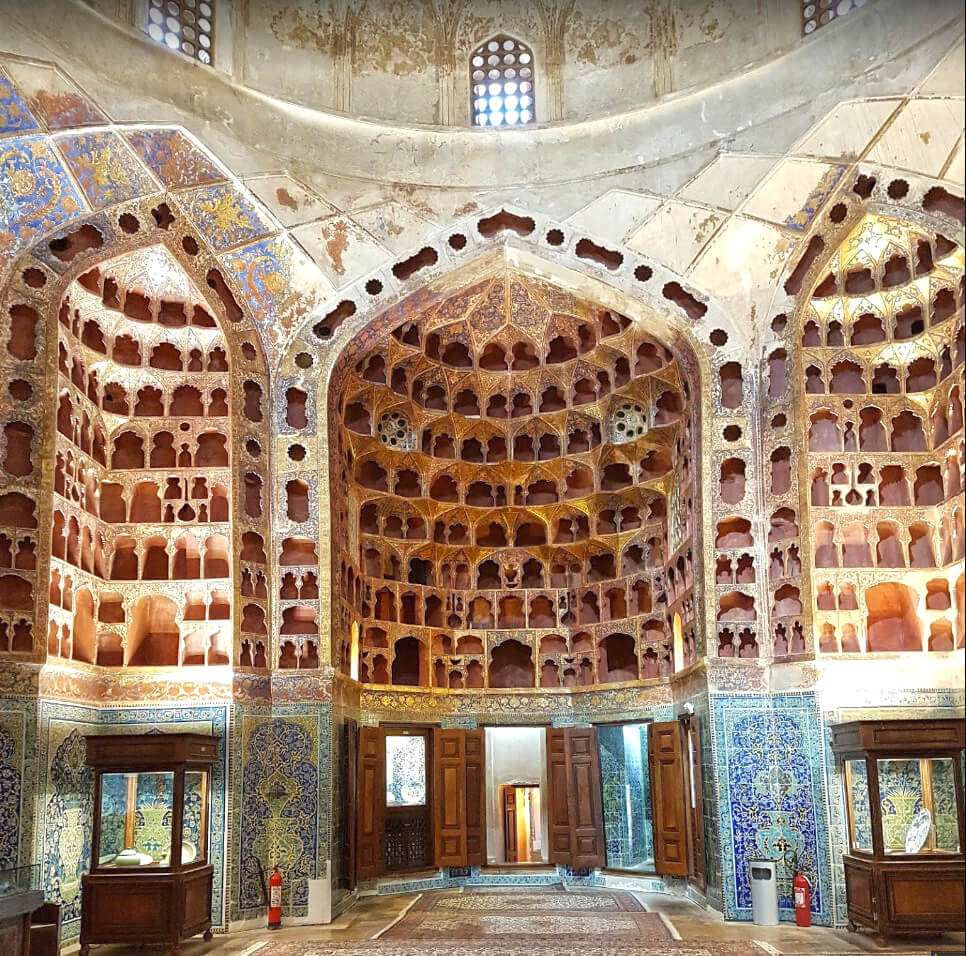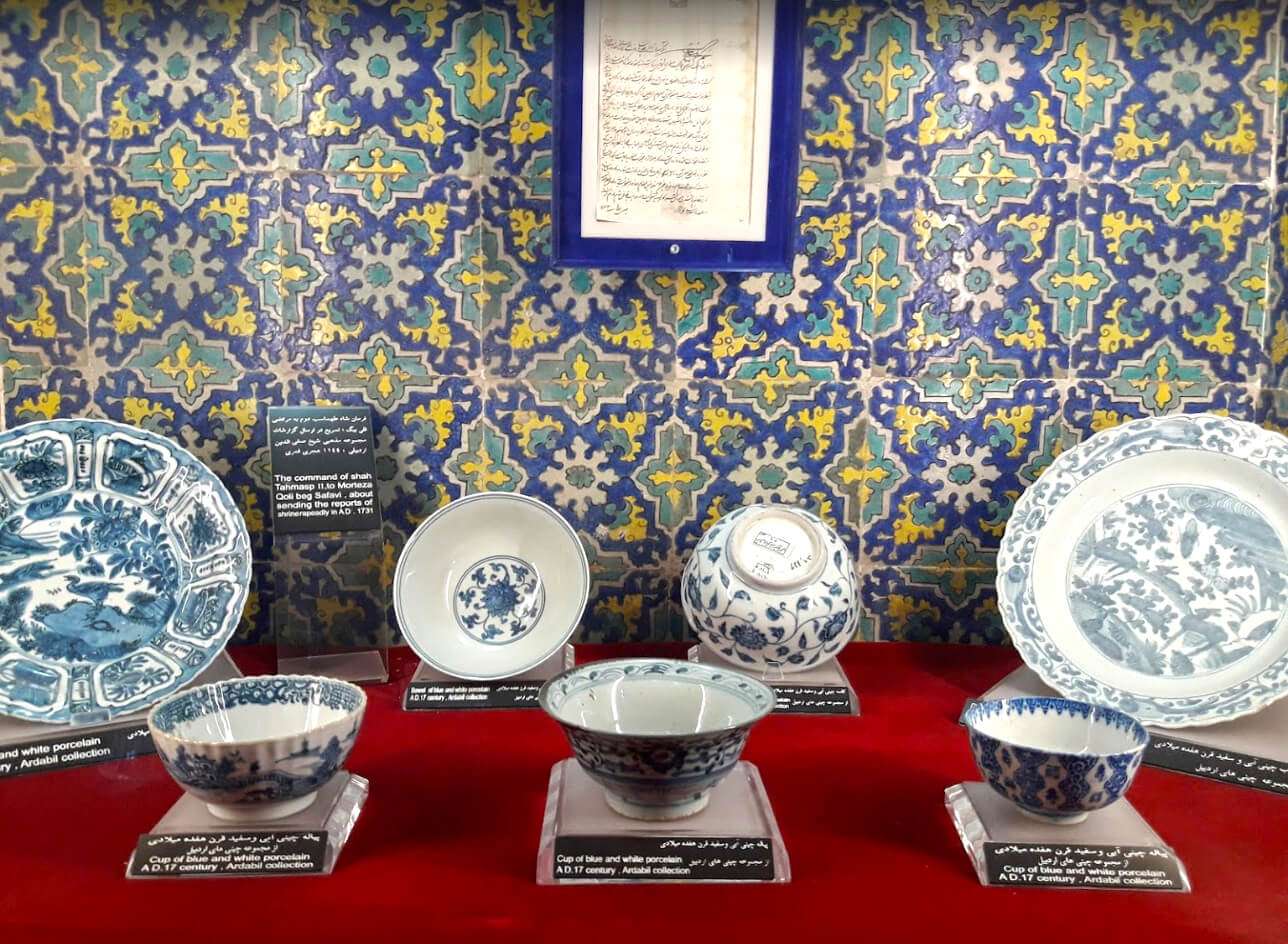Sheikh Safi al-din Khanegah and Shrine Ensemble
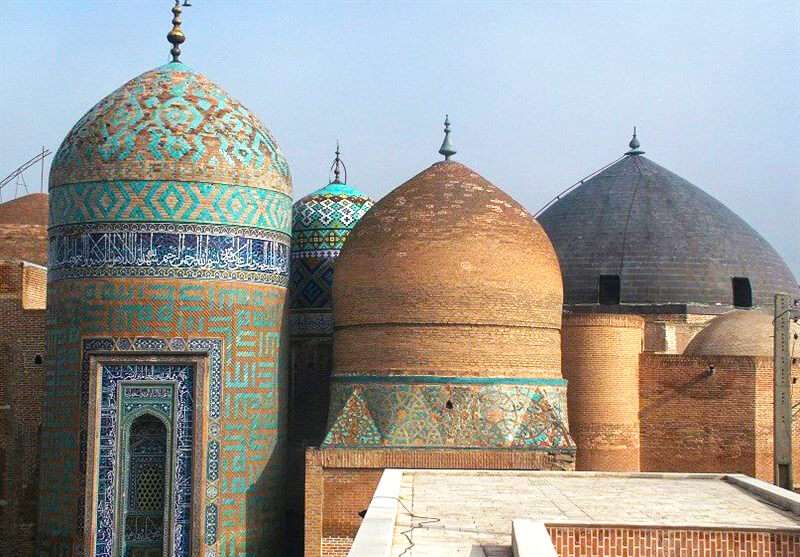
- Visiting
Sheikh Safi al-din Khanegah and Shrine Ensemble in Ardabil
- ThemeHistory and Culture
- CodeIRSG1653
- Duration3 hr(s)
Visiting the ensemble including the shrine of Sheikh Safi al-din Ardabili, the prominent figure of Sufism.
- Spring8:00-19:00 *
- Summer8:00-19:00
- Autumn8:00-17:30
- Winter8:00-17:30
* Best Time
Photos of the Sheikh Safi al-din Khanegah and Shrine Ensemble
Explore the Sheikh Safi al-din Khanegah and Shrine Ensemble
Sheikh Safi al-din Khanegah and Shrine Ensemble
City of Ardabil located on a vast plateau in Azerbaijan Province of Iran, has its roots in the ancient era. Originally called Badan Piruz, the city may have been founded in the Sassanid era (224 to 651 AD) by King Piruz. However, apparently it was known as Artāvīl (a name from Avestā, meaning a holy place), according to some historical texts. After the Muslim conquest of Persia (7th century), Ardabil started to flourish more than before. During the reign of Sajid dynasty (889-929), Ardabil was chosen as the capital of Azerbaijan. Similar to the rest of Azerbaijan, the city became a subject to conflict in the mid-10th century, as several rulers had claims over it. The development of Ardabil continued to the early 13th century until it was halted because of the attacks by the Georgians and Mongols. Although, a large number of people were killed during these attacks, the city was recovered very soon and its prosperity accelerated.
It can be said that the mid-13th century was a turning point in the history of Ardabil. In 1252, Sheikh Safi al-din Eshāq, the prominent figure of Sufism school was born in Ardabil. Ardabil became a revered holy city in Iran, especially when the descendants of Sheikh Safi took the control of the country and founded the Safavid dynasty.
Today, the complex of Sheikh Safi al-din located on the eastern wing of Ali Qapu (Ālī Qāpū) square, in the center of Ardabil, is the most considerable monument in Ardabil and a UNESCO World Heritage Site. Comprising several buildings and mausoleums, the complex was built over the remains of a Khaneqah (a building for Sufis to retreat), erected at the time of Sheikh Safi (13th century).
One can enter the complex through a two-storey entrance building on the north-west of the complex. There used to be an exquisite great gate with nice decorations built in the 17th century. It seems the gate was destroyed in the 20th century as a result of archeological explorations, so this brick building substituted the older one. The entrance opens to a garden with high walls dating to the Qajar era. The following text illustrates the buildings inside:
Highlights
- Middle Courtyard (Soffeh Court)
- New Chelleh Khaneh
- Shah Abbasi Portal
- The Main Courtyard (Sāhat)
- Jannatsara
- Dar al-Hoffaz
- Shrine of Sheikh Safi al-din
- Shrine of Shah Esmaʻil
- Haram Khaneh
- Chini Khaneh
- Shahid-gah
Middle Courtyard (Soffeh Court)
Passing the garden, you enter a small court (15 * 6 meters) through a door made of marble stone. Known as Soffeh Court, the court opens to Shahid-gāh from east, and to the Chelleh Khāneh from west. It once boasted eye-catching tile and mosaic work which are mostly ruined today.
New Chelleh Khaneh
The new Chelleh Khāneh (Chilla Khānā), on the west side of the middle courtyard, was in fact erected on the original one built at the time of Sheikh Sadr al-din (14th century). Sheikh Sadr al-din, son of Sheikh Safi, was the leader of Sufi mystics after his father. He built Chelleh Khaneh (Chelle means forty) for the mystics and disciples to practice Sufi seclusion. In this ritual, dervishes practice penance for forty days without food and sleep.
The old Chelleh Khaneh was a two-story building with more than 40 chambers centered by a domed hall. The large dome, which was the replica of the Green Dome (the dome of Prophet Mohammad’s mosque), underwent restoration during the rule of Shah Tahmasp I (ruled. 1524-1576), but collapsed in the mid-18th century.
Shah Abbasi Portal
At the end of Soffeh Court, a tiled portal, named “Shāh Abbāsi Portal”, leads to the main courtyard. It includes a pointed arch surmounted with a high blind arch showing stalactite decorations (moqarnas). There are floral motifs on the spandrels, and a Quranic Kufic inscription on the margins of the arch. This finely restored portal was added to the complex in 1629, in the time of Shah Abbas I.
The Main Courtyard (Sāhat)
Shah Abbasi portal opens to the main courtyard of the complex. The rectangular courtyard (30.5 * 16 meters), was built in the time of Shah Tahmasp I and used to hold a dodecagonal pool in the middle.
Jannatsara
On the northeastern wing of the main courtyard, there is a large octagonal building (Janatsarā) with a large wooden latticed door flanked by two blind arches. Built in 1540, this building was once capped with a large dome which was ruined about 2 centuries later. However, the building was erected to serve dervish rituals, it was used as a mosque in the late 19th century. Being the largest building of the complex, it is 20.5 meters in diameter. The current brick dome was built during the recent years under the supervision of Ardabil’s Cultural Heritage Organization.
Dar al-Hoffaz
The two-story building (11.5 * 6 meters) on the eastern wing of the main courtyard is called Dār al-Hoffāz. As Dar al-Hoffaz literally means “house of Quran reciters”, the building was built for the disciples to read Quran at the tomb of their respected leader, Sheikh Safi al-din, which was originally built in the time of Sheikh Sadr al-din Musa (14th century). Dar al-Hoffaz holds 12 galleries in two levels on the south and north sides, symbolizing Twelver Shi’ism. Also known as Qandīl-Khāneh or Ravāq, this building was totally renovated in the successive periods; including a renovation of its original decorations and inscriptions. The façade is richly decorated with polychrome tile work, and the interior walls boast gilded frescos. On the western side, the building is separated from the Shāh-neshīn by a silver gilt grille door. An embossed plaster inscription covering all around the interior walls (on a 2-meter height) bears statements about Sufism. The upper tholth inscription just below the ceiling shows Quranic verses and was made by the famous Safavid calligrapher, Mohammad Esmaʻil.
The floor was once carpeted with an exquisite carpet, known as Ardabil Carpet which is now kept in Victoria and Albert Museum of London. The 11.38 * 5.35- meter carpet was woven at the order of Shah Tahmasp I. With about 32 million knots, this carpet is known for its unique design and weaving method.
Shrine of Sheikh Safi al-din
Also known as Allāh Allāh dome, the holy shrine of Sheikh Safi is one of the oldest monuments in the complex. It was built at the order of Sheikh Sadr al-din Mūsā, son of Sheikh Safi. The construction of the building started in the year Sheikh Safi al-din died (1334), and took about 10 years to be completed. It is said that the plan of the building came to Sheikh Sadr al-din’s mind miraculously. He employed a skilled architect, ordered him to close his eyes and explained the plan of shrine to him.
The building nestled on the southern side of the main court, has a cylindrical plan from the outside and an octagonal plan from inside. It is 6 meters in diameter and 17.5 meters in height, built on a polygonal platform and topped with a double-shelled dome and a gilt finial on it. There are two entrances on the west and the east of the building. The eastern door opens to the adjacent building, Dar al-Huffaz.
The western door called Qibla Qāpūsī (meaning door of Qibla in Turkish) displays a high pointed arch exquisitely ornamented with lazuli tiles bearing verses from Quran. There is a latticed window above the doorway. The rest of the exterior show a brick background and glazed turquoise tiles bearing the name of Allah (the God) in Kufic script. Decorations of the dome include a tiled inscription with verses from Quran on the base and brick and tile work with the repetition of the word “Allah” on the top. That’s why it is known as Allah Allah dome. The upper part of the shaft holds a Quranic inscription. The exterior decorations were restored totally in the mid-20th century.
Inside the shrine there used to be superb rugs covering the floor and several gold and silver lanterns. In general, exquisite accessories were dedicated to the shrine. The cylindrical walls display a nice wood work in the lower part (about 2 meters from the floor) and the rest (the remaining 17- meter space) is covered with painted fabric. Four members of the family are buried inside the shrine: Sheikh Safi al-din; his son Sheikh Sadr al-din; his great grandson Sheikh Ebrahim; and his great- great- great grandson Sheikh Heidar. One of the most eye-catching items in the shrine is the grave casing of Sheikh Safi. It is a finely carved wooden casing with the dimensions of 3.5 * 1.5 * 1.8 meters. An Arabic inscription carved around the casing describes Sheikh Safi.
Shrine of Shah Esmaʻil
Next to the shrine of Sheikh Safi, is the Shrine of Shāh Esmaʻil, the founder of Safavid dynasty. The tomb tower, obviously shorter than that of Sheikh Safi, has a cylindrical plan from the outside and is square-shaped inside. It is capped with a double-shelled dome boasting a splendid mosaic tiling with geometrical designs and vivid colors. There is a gold and brass finial with intricate lattice work, in the middle of five curved swords. The plate on top of the finial displays the name of Allah (the God), Mohammad (the last Prophet) and Ali (the first Shia Imam). The names are enclosed with two dragons on each side. It is said that the five swords symbolize the five Shia holy figures (panj tan) or the five Qezelbash families who helped Shah Esmaʻil to ascend the throne. The façade of the shaft also displays nice decorations including cobalt blue and ocher tile work.
Passing through a large wooden door coated with silver, you may enter a square-shaped room holding the finest interior decorations in the whole complex. The walls are covered with glazed gilt cobalt blue tiles and the rest of the walls are ornamented with superb Safavid murals and gilded illuminations to the ceiling (the interior dome).
The other outstanding item in the shrine is the wooden covering on Shah Esmaʻil’s grave. The ivory inlaid chest holds intricate, repeating star-shaped geometrical patterns. The holy names of Allah, Mohammad and Ali, as well as verses from Quran are carved on the margins of the chest.
On the eastern wall of the shrine, there is a piece of marble stone placed between the tiles. The shape of a human hand is carved on the body of this 39 * 39 cm panel. This symbolizes Imam Ali’s hand and it is believed that Shah Esmaʻil brought it from Saudi Arabia.
Haram Khaneh
Haram Khāneh or Muhyi al-din Mohammad Shrine is located just on the south of Sheikh Safi Shrine. Originally built as the burial place of Mohiy al-din Mohammad, who died in 1324 (about 10 years before Sheikh Safi’s death), it gradually turned into a Safavid family tomb. Except for Mohiy al-din, wife of Sheikh Safi and his daughter are also buried there. That is why the tomb has been known as haram khaneh (place of women).
The brick structure follows Il-Khanid architectural style; it has no tile decorations on the façade of the dome and the exterior walls. The space between the dome and the walls displays some tile work.
The interior space with relatively no decorations (except for an inscription inside the dome hall and three plaster carved inscriptions on the entrance), consists of a vestibule which is connected to two rooms through a corridor. On each side of corridor there are two marble gravestones, belonging to the Safavid nobles. The gravestones are carved masterfully. The dome hall is carpeted with old handmade felt rugs. But the most exquisite relic in the shrine is the wooden chest on the grave of Muhiy al-din Mohammad. The 14-century chest holds the best of Il-khanid ornamentations. The surface is skillfully carved in geometrical patterns with the verses of Quran carved on the margins. The artisans in the art school of Tabriz made this masterpiece in 1324.
Chini Khaneh
Back to the Dar al-Hoffaz, on the northeast of Shah Safi’s Shrine, there is an octagonal domed building called Chīnī Khāneh. Apparently, it was built on the remains of an older Khanegah used for dervish rituals in the time of Sheikh Safi. It was converted to the current Chini Khaneh in the early 17th century, by Shāh Abbās the Great who dedicated the building to be used as a storehouse of Chinese porcelains.
The interior plan and decorations made Chini Khaneh the best part of the complex. It is a tetragon building (18 meters in diameter) with four symmetrical alcoves on each wall and four recesses on each corner, all forming a high pointed blind arch. The walls display magnificent tiling from the floor to the height of 2.58 meters, and the upper part of the arches boast masterful plaster work which are stenciled in different shapes (similar to the plaster decorations in music hall of Ali Qapu palace). In fact these magnificent interior decorations date back to the time of Shah Abbas.
The building once hosted a unique collection of porcelains which Shah Abbas bought or received as diplomatic gifts even many years before converting the building to Chini Khaneh. More than 1162 pieces were collected during the time, only about 80 pieces of which remained in Chini Khaneh. The other 800 items were transferred to Tehran in 20th century.
Shahid-gah
The eastern and southern wings of the complex are occupied by a vast cemetery called Shahid-gah (the place of martyrs). Dating to the time of Shah Esmaʻil, Shahid-gah used to be the burial place of Safavid commanders and soldiers who were killed in war. After Shīrvān and Chāldorān wars, he brought the corpse of his father and several commanders of the army back to Ardabil and buried them near the shrine of Sheikh Safi. Since then the cemetery has been called Shahid-gah. The archeological excavations done in the 20th century, revealed many 13th-century potteries and gravestones in this location. The gravestones were of exquisitely carved marble or black granite stones, unfortunately, most of these stones have been crushed.
Important Information
Additional Info
Cost Info
- dizi in Sheykh Safi Dizisara2 €
